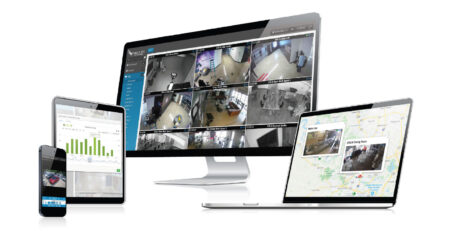Modern VoIP Features Explained – SIP Trunking
Since December 2013, we have been looking at the features of modern VoIP.
In our mind, SIP trunking is most confusing term, essentially because companies have mixed a number of technologies and features and tried to impress others with their own superior knowledge. What we will present here is a simple to understand explanation.
Before we start to understand this feature, let us get our hands on a few terms:
- PSTN Line
- Digital IP Line
- Session Initiation Protocol
- ITSP
- SIP Trunk
- SIP Trunking
We have listed these terms in a particular order to make it easy to understand SIP trunking.
A PSTN line is the connection to your office from a telephone company such as AT&T that carries one or more phone numbers. You used this connection to make calls by dialing a number locally, across the US, or other parts of the world.
IP or VoIP uses your Internet connection within your office, and the T1 or other connection you have to connect to the world. Basically, your voice is converted to digital packets and carried over the Net.
Session Initiation Protocol, or SIP as it is commonly called, is a set of standards defined by the Internet Engineering Task Force in 1996. If defines the establishment, termination, and other elements of a call which can be voice or video, or both. SIP sessions can be between two parties (unicast) or between more than two parties (multicast). SIP has been expanded to include video conferencing, video streaming, instant messaging, presence messaging, file transfer, Fax, and even games.
An IP or, VoIP, is essentially between two IP addresses. Both sides must be connected to the Net and have the necessary hardware and software needed for VoIP. In addition, both sides must have unique ids that can be linked to a permanent or dynamic IP address. The ID can be anything – your email id, your name, or a pseudonym you create for the session. The SIP identifies your location by the IP address that is used by your connection to the Net.
But what if you want to make or receive a call from a landline or a mobile phone that is not connected to the Net? That is where all these terms and technologies come into play.
To make or receive a call from a landline or a cell, you must have two calls running in parallel. One is from your IP network to a particular midpoint, and another is a PSTN call from that point to the landline or cell. The midpoint will act both as a meeting point for the two calls, and as a translator. The translation is to convert the digital to analog signals and vice versa, as well as other conversions that are needed.
The midpoint process can be achieved in two ways. You can have a PSTN line in your office and a small interface device. Whenever you make a call to a landline or a cell, your IP network will trigger the device to make a call through your PSTN line. Once the call is established, the device then starts converting the calls between the two networks. This also works the other way. When you receive a call from a landline or a cell, the call lands on your PSTN number. The device then transfers the call to your digital network, displays the caller id and, starts the conversion process.
Another way is to have a purely digital IP network and do away with all PSTN lines. In this case, the interface and conversion between your digital IP network and the PSTN line is provided by an external service provider call Internet Telephone Service Provider, or ITSP. The ITSP also does what your in-house PSTN line and black box would have done.
The ITSP provides a SIP trunk line that you subscribe to. When you make a call to a landline or a cell phone, the ITSP will give you choices in terms of the routing to use that goes through multiple service providers. You can choose one that is optimal in terms of quality and cost. In almost all cases you call is taken over the Internet till a point that is closest to the landline or cell. This way, the receiver pays less to receive a call, and you pay less to make the call.
SIP trunking gives you many benefits
- It extends your digital IP network to the whole world. You can make and receive calls to and from all corners of the world.
- Call rates are significantly lower. Most of your calls are covered by your data plan, and you pay a small extra for the SIP trunk.
- SIP trunks extend a large part of the digital capabilities to the digital phone and smartphones such as instant messaging, and video calling.
- SIP trunking through an ISTP allows you to have a single data connection to your office.
- Turns most international calls to local calls, as SIP calls travel over the Internet to a termination point where it is connected to the local PSTN.
- Converts 800 numbers to local calls for further transfer to your office through the Internet, again saving you a lot of money.
- SIP trunking offers converged communication through a single digital IP line. Calls are terminated closer to the party on both sides, significantly saving you money.
Dove Communications can study you call pattern and install the best SIP trunking system for you. SIP trunks are also available for cloud-based business telephone systems. Call us today to install the most optimal communication system for you.









